Studies for Development of Public Cinema with Park project in the city of Videira, Santa Catarina
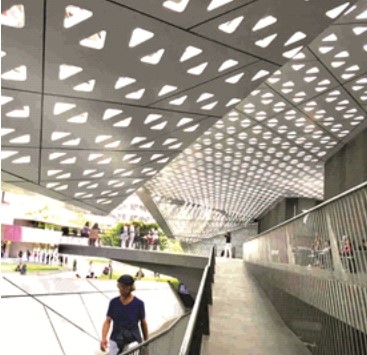
LEANDRO MARQUES FRAGA
JULIANA APARECIDA BIASI
TULAINY PARISOTTO
JEFERSON EDUARDO SUCKOW
Abstract
The objective of this work is to carry out researches and studies that support the development of a public cinema project in a park in Videira, Santa Catarina. This project aims to meet the underprivileged population that corresponds to 22% of the population of the municipality, providing this public with access to free culture and leisure.
This research is exploratory and qualitative in nature. During the development the need and importance of this kind of project in the city was evident. A needs program has been defined, before a user review, that addresses the perfect functioning of the building and public needs and flow chart for efficiency and functionality, as well as an analysis and choice of suitable terrain for the proposal. It was also adopted a concept and architectural party with the intention of giving meaning to the draft and helping in its resolution. The realization of the draft is justified by several factors presented in the paper.
Key words: Architecture; Inclusion; Cinema and education
Resumo
O objetivo do presente trabalho é realizar pesquisas e estudos que possam embasar o desenvolvimento de um anteprojeto de cinema público inserido em parque em Videira, Santa Catarina. Este projeto visa atender a população carente que corresponde a 22% da população do município, proporcionando a este público o acesso à cultura e lazer gratuitos. Esta pesquisa é de caráter exploratório e natureza qualitativa. Durante o desenvolvimento ficou evidente a necessidade e importância de uma obra desta categoria na cidade.Foi definido um programa de necessidades, após uma análise de usuário, que atenda o perfeito funcionamento da edificação e necessidades do público e fluxograma visando a eficiência e funcionalidade, além de uma análise e escolha de um terreno adequado para a proposta. Também foi adotado um conceito e partido arquitetônico com o intuito de dar significado ao anteprojeto e auxiliar na sua resolução. A realização do anteprojeto se justifica por diversos fatores apresentados no trabalho.
Palavras-chave: Arquitetura; Inclusão; Cinema e educação
Resumen
El objetivo del presente trabajo es realizar investigaciones y estudios que fundamenten el desarrollo de un anteproyecto de cine público insertado en parque en Videira, Santa Catarina. Este proyecto pretende atender a la población necesitada que corresponde al 22% de la población del municipio, proporcionando a este público el acceso a la cultura y ocio gratuitos. Esta investigación es de naturaleza exploratoria y cualitativa. Durante el desarrollo quedó evidente la necesidad y importancia de una obra de esta categoría en la ciudad. Se definió un programa de necesidades, después de una análisis de usuarios, que atiende el perfecto funcionamiento de la edificación y necesidades del público y el diagrama de flujo para la eficiencia y funcionalidad, además de un análisis y elección de un terreno adecuado para la propuesta. También se adoptó un concepto y partido arquitectónico con el propósito de dar significado al anteproyecto y ayudar en su resolución. La realización del anteproyecto se justifica por diversos factores presentados en el trabajo.
Palabras clave: Arquitectura; Inclusión; Cine y educación.
1 Introduction
This work aims at the research and development of an architectural project to build a public movie theater and park in the city of Videira (SC), to provide cultural and educational inclusion to the population of the city in general and the Midwestern area of the state,.
Many schools use ‘cinema in the classroom’ to improve the education method. The great problem is that the space they usually offer is not structurally appropriate, with thermal and acoustic requirements within the comfort range. (KLAMMER, 2006). This could be a way to improve school attendance, because according to the IBGE (Brazilian Institute of Geography and Statistics, 2010) the number of elementary school enrollment in the city of Videira has been falling since 2005.
According to the ANCINE (Brazilian National Cinema Agency, 2019), in 1975, there were around 3,000 movie theater rooms all over Brazil; with the increase in urbanization and the lack of resources, among other reasons, in 1997 the number of movie theater rooms in the country were approximately 1,000. In other words, a 2/3 cutback in less than 22 years. With the rise of shopping malls, this number increased and nowadays there are 2,000 rooms. However, this number is still not enough. Brazil is the 60th country regarding inhabitants per room. For this reason, there are programs like ‘Cinema da cidade’ and “Lei Rouanet’ sponsored by the ANCINE and the Ministry of Culture respectively, that encourage the construction of those places so everybody can access them (ANCINE, 2019; BRAZIL, 2019).
Movie theater tickets may be too expensive for many people. Most of the underprivileged population do not go to the movie theater because they finish high school and do not start college straight away, mainly for money reasons and because they do not know about their right to pay half admission. For these reasons, we could ask ourselves: how do you plan a movie theater in a park that will meet the requirements equally for the whole population?
Considering the facts presented, the construction of a movie theater in a park is justified because both spaces will provide better social interaction, through the availability of different kinds of recreation. The economy would be more active, provided by a unique architectural work and a public regional movie theater tourism. A lifestyle improvement due to the educational and cultural access through movie theaters or complementary activities in the park. That can also promote health and physical well-being; according to Barton and Pretty (2010), a five-minute walk is enough to improve mental health, mood and self-esteem.
2 Methodology
Research is classified by the following categories: classification related to its own purpose, nature, and object of study. The classification of the current study in terms of its own purpose is exploratory because it focuses on the familiarization of the content and the knowledge expansion. With further knowledge about the subject, locating problems is clearer and structuring new researches is better. The classification of the research in terms of nature is qualitative because it focuses on the meaning, essence, and source of the information. The information is mostly descriptive, the material is full of events, people, documents, and descriptions of other objects of study. At last, the classification in terms of object of study, is the study of multiple cases, where the researchers must study two or more architectural works. (SELLTIZ, 1965; GIL, 1999).
3 Development
3.1 The influence of movie theaters on education
Movie theater and television were consolidated during many historical events and social, cultural, and political struggles. Movies tell a story in the historical context they were produced. They have their production value that happens within a context and events that happened in a certain period. (NAPOLITANO, 2009). The movie ‘Modern Times’, directed and starred by Charlie Chaplin, for example, shows its production value in a certain context criticizing the Industrial Revolution.
Movie theaters may also be understood as an artistic language and it must be developed. Every movie is a result of a series of elements: choices, clips, point of views, aesthetic, and ideological interests. Those elements may vary according to the options of the person who envisioned it. A movie is an art different from books, paintings, music, and theatre. Its narrative followed by image productions makes it easier to understand everything that is exposed. (NAPOLITANO, 2009). According to Napolitano (2009, p. 11) “[...] when we go to a movie theater, we establish some kind of pact of reality according to the movies we watch”.
The evolution of technologies such as the cassette tape, DVDs and the Internet, has stopped several movies from being forgotten or getting lost in time. It is still possible to access movies produced in 1910, 1920 and 1930 for example. In these activities, besides enhancing historical contents, it is also possible to approach transversal topics such as: citizenship, sexuality, environment, and cultural diversity. Another form of debate in education is the way the movie portraits a certain subject. The teacher can discuss its development to spark constructive debates. (NAPOLITANO, 2009). According to Fantin (2007, p. 7):
Expanding children’s cinematographic repertoire means to make sure that they have access to a variety of themes. Bringing different movies from different countries and cultures to school and showing different points of view allows children to enjoy the cultural humanity heritage that they probably would not have access to, due to our historical and social context.
With technological advances, students can also create their own productions since the access to computers and the Internet is easier nowadays. For example, most cell phones can record images and sounds, which is useful for the activity. This teaching approach is also an enriching experience because it develops new skills and a critical eye over what it is being produced. (NAPOLITANO, 2009).
3.2 The influence of the park to the population
According to CMMD (World Commission on Environment and Development, 1988), about 60% of the population will live in urban centers in 2030. For this reason, the concern about the deficit of green areas is increasing, and urban parks are more and more necessary. They provide wooded spaces that become the cities “lung”, and they also promote physical activities, improving public health significantly (SZEREMETA, 2013). For teaching, these parks can be used for environmental education, in addition to easing the effects of stress. They provide ecologic, aesthetics and leisure functions (KAPLAN, 1995).
Vegetation is responsible for building a suitable and friendly environment to perform these activities (MILANO, 1984). People feel more satisfied and motivated to perform activities in places with wooded and/or aquatic views. Those views followed by an easy access also motivates them to visit those kinds of places more frequently (CORTI et al., 1997; BARTON; PRETTY, 2010). According to researchers, it is the architects and urbanists’ job to create green designs that will serve children and create the opportunity of learning in an external environment (BARTON; PRETTY, 2010).
Based on studies conducted by Reis (2001) in the south of the country, the proximity between parks and residences is the main reason that stimulates the visitation and physical exercises. Other reasons that motivate visiting parks are: geographical or natural beauty, exercise facilities, parking, visitor’s good behavior, and good traffic flow. The reasons that inhibit visiting parks are: heavy rains and pollution, and also the lack of maintenance and security. (REIS, 2001). One of the proposals of the World Health Organization (WHO) and United Nations for the environment is to set a minimal green area per habitant. The WHO recommends 9 m² per person nowadays. A green design is also recommended so the habitants will not live farther than a 15-minute walking distance from a public green space. (PNUMA, 2003).
3.3 Data analysis of the city of e Videira (SC)
According to the IBGE (2018), Videira’s current population is around 52,510 habitants. It is the second most populated of the 27 cities in microregion where it is located. It is the right place to include the highest number of people possible. Also, according to the IBGE (2018), the proportion of 15-24 year olds (average age of high school and higher education students) of the population of Videira is about 18.4%. It is worth mentioning that the draft of this project aims at helping the underprivileged population, and the goal is to offer them access to culture and recreation. That is because according to the IBGE (2010), 22% of the the population of Videira’s income is up to half minimum wage.
According to an inquiry into the Videira Cine Group (2019), the current movie theater located in the city mall accommodates 304 people. An exhibition room provides 170 seats and 2 for wheelchairs, and the other one provides 130 seats and 2 for wheelchairs. These rooms are insufficient for blockbusters and new movies.
3.3.1 Analysis of users
A public movie theater in a park brings many benefits from recreation to social interaction, along with a better quality of life. These reasons arouse the interest of the public sector, citizens, and local businessmen. Therefore, with the public and private sector’s support, it is possible to succeed at the urban development and civil work.
There is a classification regarding regular and irregular visitors. Regular visitors use the space more frequently at a determined time. People who work there from the administrative section, to cleaning and maintenance are included on this classification. Outsourced workers that work with loading and unloading are also included.
Irregular visitors do not stay in the building for a long time. They are the ones who bring success and promote the space. This classification includes tourists and the city’s population. It is worth mentioning that the draft of this project aims at helping the underprivileged population, and the goal is to offer them access to culture and recreation. That is because according to IBGE (2010), 22% of the Videira’s population income is up to half minimum wage. Another goal is to support education; therefore, elementary and high school students are also a target audience. The support on education is necessary because the number of elementary students have been falling through the years, which is also related to the birth rate.
The gender of the visitors varies according to the movies available. Generally, men prefer action movies and women prefer drama and romance, for example. According to studies, young people prefer outdoor activities, pubs, group activities and freedom outside the house. This is a positive aspect of building a movie theater in a park because it expands the activities and the target public options. Young people associate movie theater to dating and according to the parents, it is an allowed entertainment because it is safe (EARP; SROULEVICH, 2012).
Older people in general go to movie theaters with friends and family. Most of those people already have their own family, job and other adult life obligations. Traveling becomes painful, tiring and the length of the movies makes them go back home too late to do housework. The emergence of options to watch movies at home with good quality reduced the frequency of movie-goers. That is because many people think it is very expensive and it is much more comfortable to watch it at home.
3.4 Case study
An international case study has been carried out in order to get further knowledge about this type of construction, since there are no buildings of this size in Brazil. In this study, Cineteca Nacional S. XXI (Image 1) of Rojkind Arquitectos was analyzed. In order to study and interact with the space, an on-site visit was carried out in Mexico City.
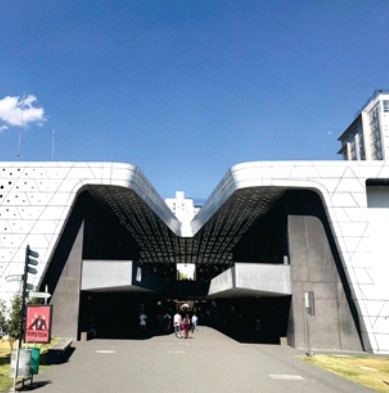 Image 1 - Cineteca Nacional pedestrian entrance, source: authors (2019)
Image 1 - Cineteca Nacional pedestrian entrance, source: authors (2019)
The current building is in the same place where the old cineteca ,that was destroyed by a fire, used to be. The building was finished in 2014 and it works perfectly so far. It has a total area of 49,000 m² including the land with a park and a built-up area. The building is located in a select neighborhood of Mexico City, the Xoco district. Pedestrian and vehicles access to the complex and other modes such as bicycle stands, subway stations, and bus stops are available.
Many sectors make the complex such as the movie theater, commercial rooms, the library, the administrative sector, parking and a national museum about the movie theater history. An amphitheater is used for outdoor exhibitions. It is possible to observe the distribution of these sectors looking at Image 2.
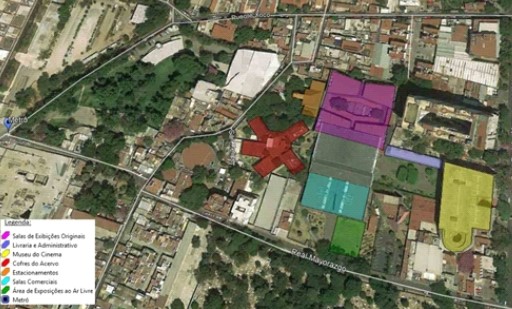 Image 2 - Building sectors, source: adapted by Google Earth authors (2018)
Image 2 - Building sectors, source: adapted by Google Earth authors (2018)The goal of the project was achieved because many people use the space at different times of the day. Employees of a hospital nearby visit the place during their lunchtime, students go in the afternoon to spend time, and people who enjoy movies go at night. The access to other floors are available exclusively through ramps (Image 3). That is a positive accessibility and inclusion aspect, since there are no mandatory inclusive legislation construction projects for people with special needs in Mexico.
 Image 3 - Cineteca Nacional access ramp, source: the authors (2019)
Image 3 - Cineteca Nacional access ramp, source: the authors (2019)
The Cineteca Nacional is in a subtropical region and summer temperatures can soar. To solve this problem, a wooden canopy was constructed out of white aluminum for air circulation and for the most part inhibits heat absorption. This canopy is also a part of the façade. A negative aspect is the lack of bicycle lanes nearby, even though there is a bicycle rack on Real Mayorazgo Street.
4 Results: proposal of a movie theater in a park
After the surveys and case study, it was observed that it would be necessary to build a movie theater able to accommodate about 528 people in exhibition rooms and an external exhibition area with audience flow control. It was also set a pre-dimensioning built up area of 1,695.50 m² to meet the program’s needs. This program is distributed in the following sectors: public, commercial, movie theater, library, education and production, administrative, employees, services and technical areas. The ‘education and production’ sector is necessary for educational assistance. With this sector, the building offers every kind of support and structure necessary for the development of video works and the students’ productions. The amphitheater of public exhibitions calls on bringing access to culture and recreation to the underprivileged part of the population. It can also be the exhibition place for local students.
In order to ensure the building’s functionality, a flowchart has been developed (Image 4), with every needed room necessary, divided into sectors and flows. The following flows were considered: public, controlled public and private. The public flow is where the general public has access to. Before accessing a specific sector, users are controlled. This is the controlled public flow. Finally, the private flow is only for employees, administrative activities and building operations.
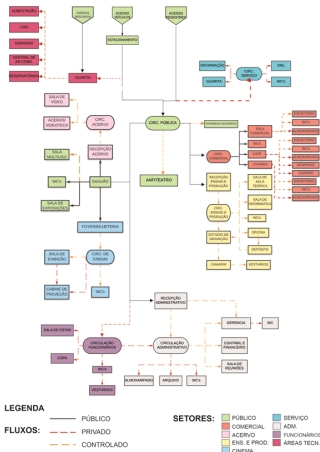 Image 4 - Flowchart of a public movie theater in a park proposal, source: the authors (2019).
Image 4 - Flowchart of a public movie theater in a park proposal, source: the authors (2019).
Land in the city of the city of Videira (SC) has been chosen to be analyzed for the project’s development, as shown in Image 5.
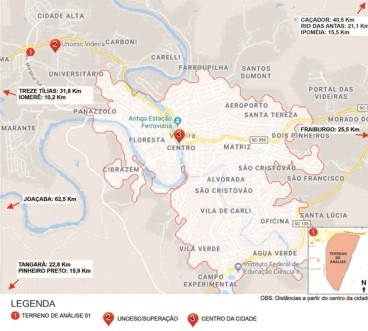 Image 5 - Lands analyzed for the proposal in Videira’s map, source: adapted by Google Earth authors (2019)
Image 5 - Lands analyzed for the proposal in Videira’s map, source: adapted by Google Earth authors (2019)
After testing its capabilities and failures, the land has been established for showing the most relevant characteristics to the project. This land located in the University district has 17,260 m². According to the Complementary Law No. 56/07 (VIDEIRA, 2007), the land under analysis is located on the Residential Area 2 of medium density (ZR2). The use of the land is allowed on this area for ‘community use 2’, the category in which the movie theater is included.
Its strategic location far from the downtown avoids the urban road structure overload at rush hour and events locomotion problems. The location is also favorable according to its goals of being near the suburbs, schools, universities and other parks. The Uva Park where many city events are held is located in the south of the land, and it was going through a complete refurbishment . It is possible to integrate the draft of the project and this park, because the only thing in between them is the Waldemar Kleinubing Street. This proposal aims to assist and increase the activities already held on this place. The chosen area for intervention has roads in all of its façades. This factor helps the project’s resolution of pedestrians, vehicles, loading and unloading. It also has the infrastructure necessary of water and energy supplies. It is possible to observe this land in Image 6.
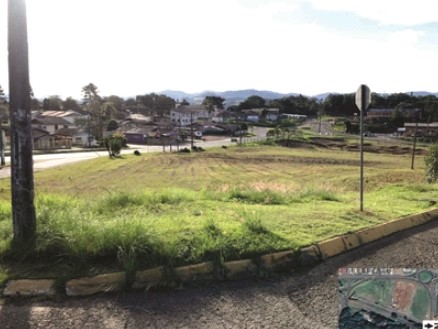 Image 6 - View of the chosen land for the draft of the project, source: the authors (2019)party
Image 6 - View of the chosen land for the draft of the project, source: the authors (2019)party
4.1 Concept and Reference
The draft project of this public movie theater in a park, seeks the concept of ‘inclusion’. A place where everybody can have equal access, with no exceptions. The space longs to serve everybody in their recreation moment and personal satisfaction. The word inclusion refers to include physical and emotional inclusion. Everybody should enjoy it as they please, if it does not affect people’s lives negatively. For instance, the inclusion of the underprivileged population has been a challenge in times where free entertainment and access to culture are rare. This concept also aims at making women feel comfortable to do their activities by themselves, without being called promiscuous or suffering any kind of harassment. As it is a public work, the movie theater in a park has the obligation to include anybody, no matter the race, religion, gender, sexuality, age, special needs, and preferences.
It is quite common to find pictures of people holding hands in a circle when a research about inclusion is carried out. This shape that is going to be used as a starter may represent harmony among people and society in general. The goal is to bring this circular shape to the draft project resolution. It can be used both in the façade elements and the floor plan layout. The floor plan radial layout can be functional and with an integrated space in the center.
5 Final considerations
It is possible to state that recreation and culture improve the population’s well-being and lifestyle significantly, based on the researches carried out for this work. It has been confirmed the importance of using movie theaters in education and the benefits of a park based on many authors about the subject. This project aims at including the low income part of the population and turning the place into an attractive site with many activities. In addition, it also contributes to the local economy development indirectly related to the regional tourism. At the end of the stage, the project shows the necessary guidance to its development based on the research undertook.
References
ANCINE. Ações e programas. Disponível em: http://www.ancine.gov.br/pt-br/acesso-ainformacao/acoes-e-programas> Access in: 24 mar. 2019
BARTON, Jo; PRETTY, Jules. What is the best dose of nature and green exercise for improving mental health? A multi-study analysis. Environmental science & technology, v. 44, n. 10, p. 3947-3955, 2010.
BRASIL. Ministério da Cultura. Programas e Ações. Brasília, DF: Ministério da Cultura. Disponível em <www2.cultura.gov.br/site/acesso-a-informacao/programas-e-acoes/> Acesso em: 24 mar. 2019.
CORTI, Billie; DONOVAN, R. J.; HOLMAN, D’Arcy. Factors influencing the use of physical activity facilities: Results from qualitative research. Health Promotion Journal of Australia, 7, 16-21, 1997.
CMMD (Comisión Mundial del Medio Ambiente y del Desarrollo), Nuestro futuro común, Alianza, Madrid, 1988.
EARP, Fábio Sá; SROULEVICH, Helena. O MERCADO DO CINEMA NO BRASIL. Disponível em: www.ie.ufrj.br/datacenterie/pdfs/seminarios/pesquisa/texto04112.pdf. Acesso em: 27 de abr. 2019.
FANTIN, Mônica. Mídia-educação e cinema na escola. Revista Teias, v. 8, n. 14-15, p. 13, 2007.
GIL, A. C. Métodos e técnicas de pesquisa social. 5.ed. São Paulo: Atlas, 1999.
GRUPO CINE. Grupo Cine Videira: sobre nós. 2019. Disponível em <www.grupocine.com.br/institucional.html> Acesso em: 20 de abr. 2019.
IBGE. Instituto Brasileiro de Geografia e Estatística. Santa Catarina: Videira. 2018. Disponível em <www.cidades.ibge.gov.br/brasil/sc/videira> Acesso em: 24 mar. 2019.
KAPLAN, S. The restorative benefits of nature: toward an integrated framework. Journal of Environmental Psychology 15, 169–182, 1995.
KLAMMER, Celso Rogério et al. Cinema e educação: possibilidades, limites e contradições. In: SIMPÓSIO NACIONAL DE HISTÓRIA CULTURAL, 3., 2006, Florianópolis. Anais eletrônicos [...]. Florianópolis: UFSC, 2006. p. 872-882.
MILANO, M.S. Avaliação e análise da arborização de ruas de Curitiba-PR, 1984. Dissertação Mestrado-Universidade Federal do Paraná, Curitiba - Paraná.
NAPOLITANO, Marcos. Cinema: experiência cultural e escolar. In MORETTIN, Eduardo. Uma história do cinema: movimentos, gêneros e diretores. São Paulo: FDE, 2009. p. 47-67.
PNUMA (Programa de Naciones Unidas para el Medio Ambiente). Proyecto de Estadísticas e Indicadores Ambientales del Foro de Ministros de Medio Ambiente de América Latina y el Caribe, documento preparado para la XIV Reunión del Foro de Ministros de Medio Ambiente de América Latina y el Caribe, PNUMA, Panamá, 2003.
REIS, R. S. Determinantes Ambientais para a Realização de Atividades Físicas nos Parques Urbanos de Curitiba: Uma Abordagem Sócio-Ecológica da Percepção dos Usuários. 101 p. Dissertação (Mestrado em Educação Física) - Centro de Desportos da Universidade Federal de Santa Catarina. Florianópolis, 2001.
SELLTIZ, C.; WRIGHTSMAN, L. S.; COOK, S. W. Métodos de pesquisa das relações sociais. São Paulo: Herder, 1965.
SZEREMETA, Bani; ZANNIN, Paulo Henrique Trombetta. A importância dos parques urbanos e áreas verdes na promoção da qualidade de vida em cidades. Raega-O Espaço Geográfico em Análise, Curitiba, v.29, p.177-193, dez/2013.
VIDEIRA (SC). Lei complementar nº 56/2007. Dispõe sobre o zoneamento e uso e ocupação do solo urbano da sede do município de Videira, e dá outras providências. Disponível em <www.leismunicipais.com.br/plano-de-zoneamento-uso-e-ocupacao-do-solo-videira-sc> . Acesso em: 27 mar. 2019.
About the authors:

Leandro Marques Fraga
Architecture and Urbanism Academic student (Unoesc), Computer Technician (IFC).
Link to Lattes: http://lattes.cnpq.br/1561788913534708

Juliana Aparecida Biasi
Master’s Civil Engineering (UTFPR), Expert in Engineering and Project Management (PUCPR), Architect and Urbanist (PUCPR). Professor of Graduate Studies in Architecture and Urbanism (Unoesc).
E-mail: Este endereço de email está sendo protegido de spambots. Você precisa do JavaScript ativado para vê-lo.
Link to Lattes: http://lattes.cnpq.br/4916582959866093
https://orcid.org/0000-0002-1543-9919

Tulainy Parisotto
Master’s in Education (Unoesc), Expert in Labor Safety Engineering (Unoesc) and Commercial Architecture and Buildings Buildings Sustainability (Unochapecó), Architect and Urbanist (Unochapecó). Professor of Graduate Studies in Architecture and Urbanism (Unoesc).
E-mail: Este endereço de email está sendo protegido de spambots. Você precisa do JavaScript ativado para vê-lo.
Link to Lattes: http://lattes.cnpq.br/0186223516311999
https://orcid.org/0000-0003-3806-861X

Jeferson Eduardo Suckow
Expert in Professor and Coordinator of the Graduate course of Architecture and Urbanism (Unoesc).
Link to Lattes: http://lattes.cnpq.br/1561691474028602
https://orcid.org/0000-0001-6827-8189
How to cite:
FRAGA, Leandro Marques; BIASI, Juliana Aparecida; PARISOTTO, Tulainy; SUCKOW, Jeferson Eduardo. Studies for Development of Public Cinema with Park project in the city of Videira, Santa Catarina. 5% Arquitetura + Arte, São Paulo, year 14, v. 01, n.18, e116, p. 1-17, jul./dec/2019. Available in: : http://revista5.arquitetonica.com/index.php/uncategorised/estudos-para-desenvolvimento-de-projeto-de-cinema-publico-com-parque-em-videira-santa-catarina-2
English translation by:
Marcella Bignardi Galvão
M.A. Nívia Maria Rodrigues Fernandes Marcello
Acessos: 2326